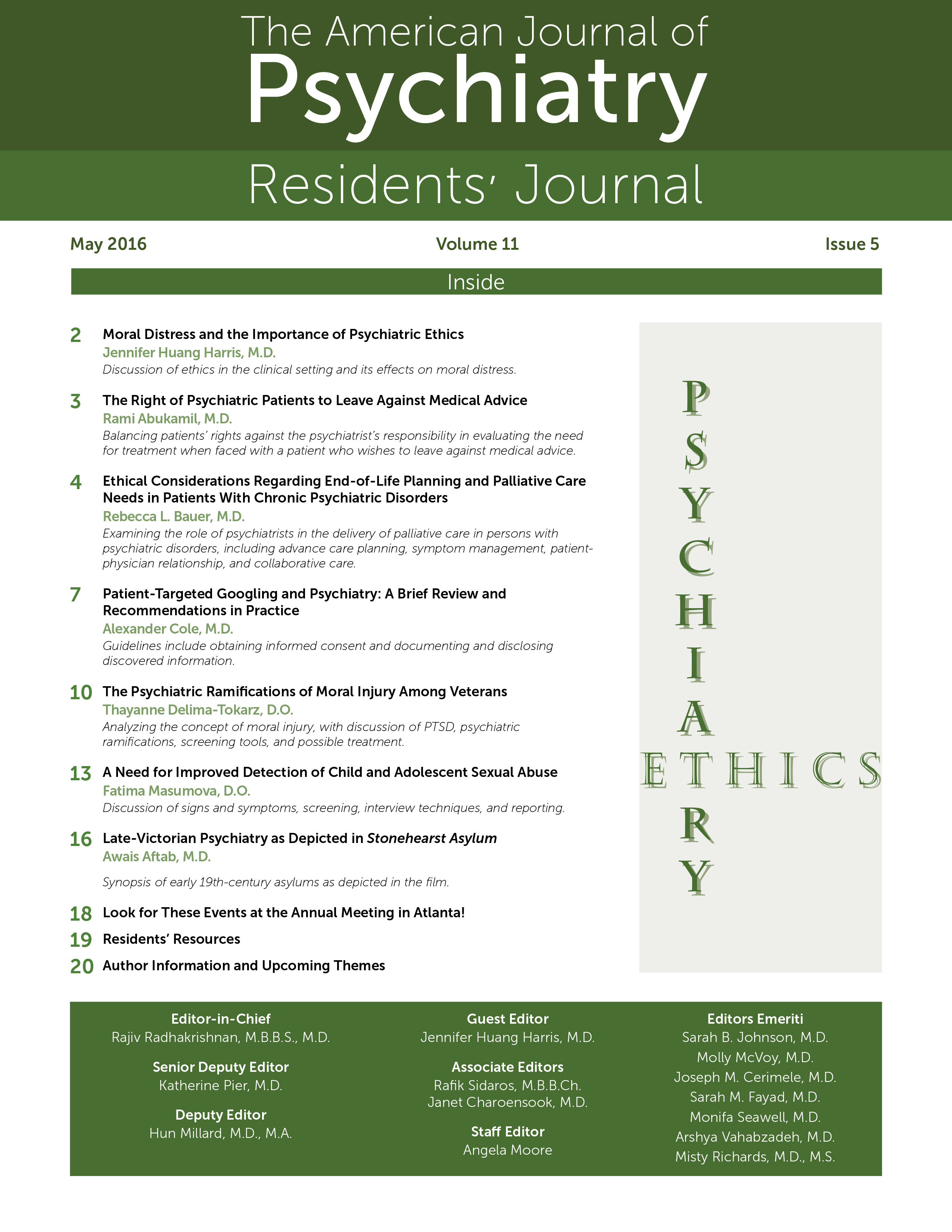A Need for Improved Detection of Child and Adolescent Sexual Abuse
[Case]
Child Sexual Abuse Statistics
Child Sexual Abuse Accommodation Syndrome
Associated Signs and Symptoms
Child Abuse Screening
Interview Techniques
| Interview and examination |
| Relaxing environment and limited interruptions. |
| Avoiding suggestive questions. |
| Videotaping and sharing of information to preserve original report and to limit the number of victim interviews. |
| Use of anatomically correct dolls and drawings to elicit details. |
| Noting signs and symptoms associated with sexual abuse. |
| Noting factors that support the child’s credibility. |
| Mental status examination and, if possible, physical and genital examination by qualified clinician. |
| Report |
| Awareness about state ethical and legal requirements and being prepared to testify in court. |
| Recommendations |
| If possible, determining whether sexual abuse occurred; making recommendations regarding the child’s safety and treatment for the child and family, as well as recommendations pertaining to the offender. |
Reporting Child Abuse
Conclusions
Key Points/Clinical Pearls
Acknowledgments
References
Information & Authors
Information
Published In
History
Authors
Metrics & Citations
Metrics
Citations
Export Citations
If you have the appropriate software installed, you can download article citation data to the citation manager of your choice. Simply select your manager software from the list below and click Download.
For more information or tips please see 'Downloading to a citation manager' in the Help menu.
View Options
View options
PDF/EPUB
View PDF/EPUBGet Access
Login options
Already a subscriber? Access your subscription through your login credentials or your institution for full access to this article.
Personal login Institutional Login Open Athens loginNot a subscriber?
PsychiatryOnline subscription options offer access to the DSM-5-TR® library, books, journals, CME, and patient resources. This all-in-one virtual library provides psychiatrists and mental health professionals with key resources for diagnosis, treatment, research, and professional development.
Need more help? PsychiatryOnline Customer Service may be reached by emailing [email protected] or by calling 800-368-5777 (in the U.S.) or 703-907-7322 (outside the U.S.).
